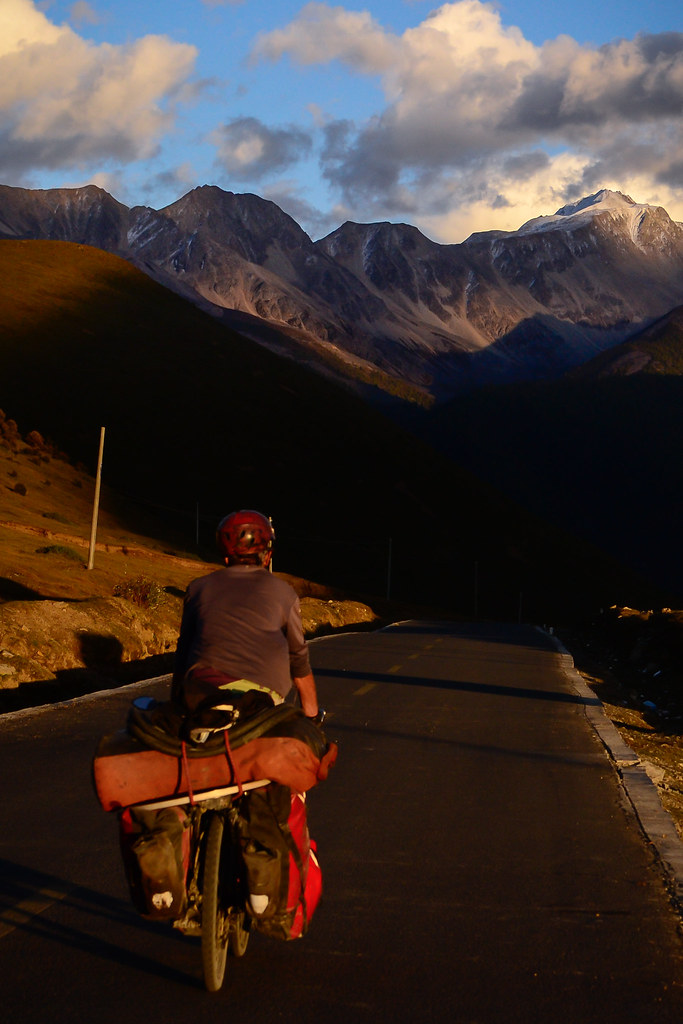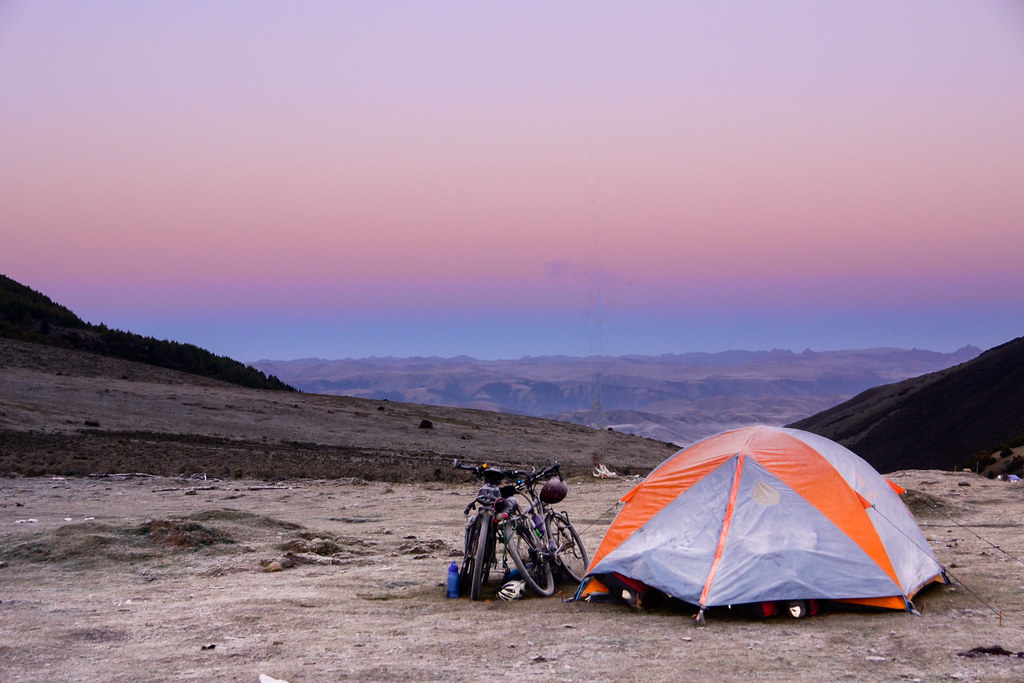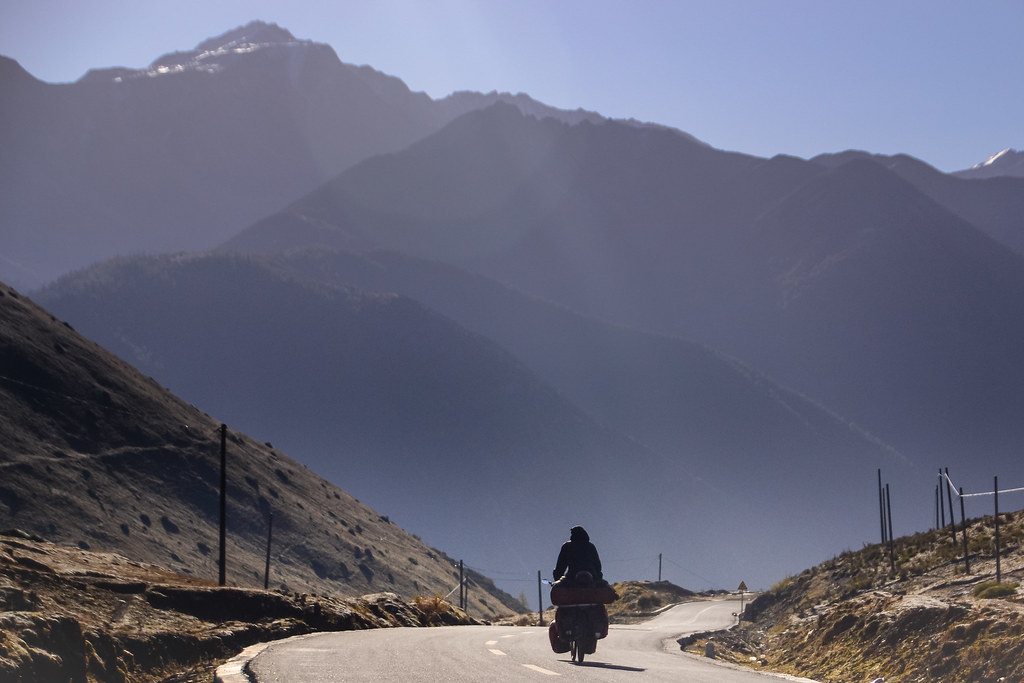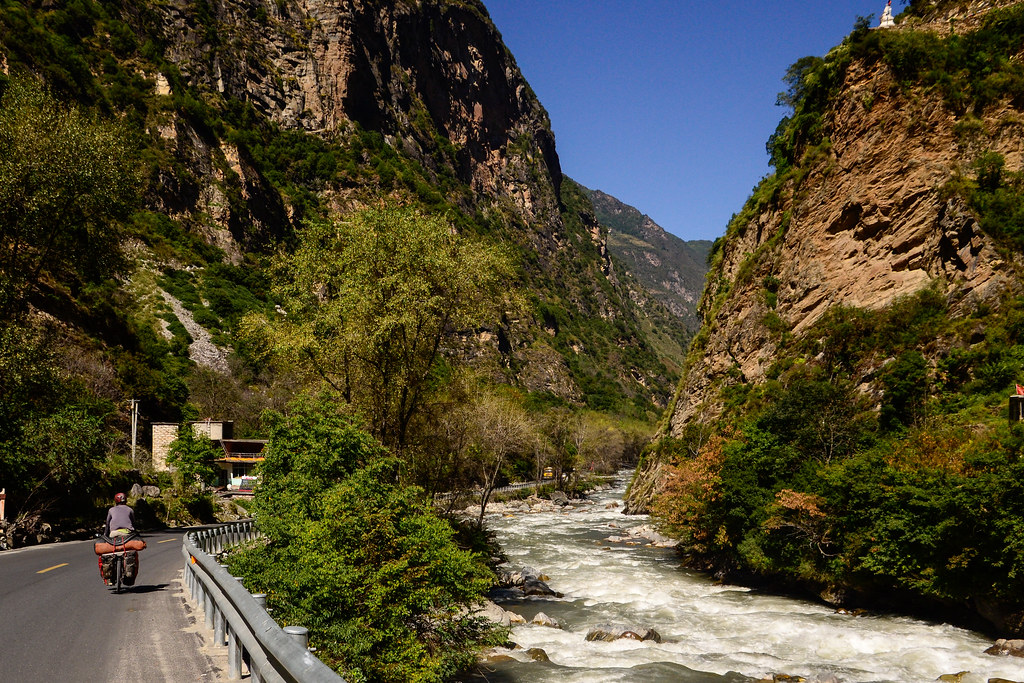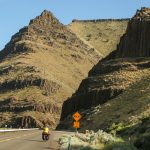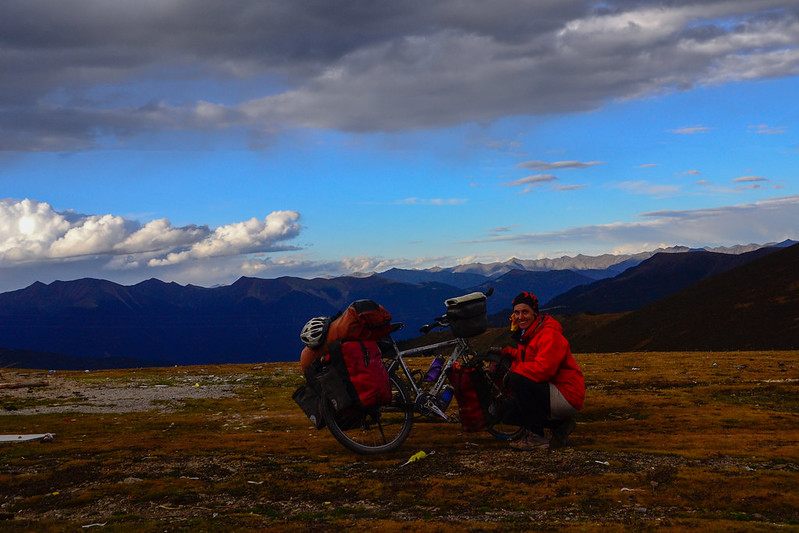
All was well. We’d solved the headset crisis. Some big mountains and amazing landscapes lay ahead. Rains had plagued us since we hit China, but as we rolled out of Litang, the day shone bright and clear. Life was perfect.
At least for around 15 minutes.
Then I noticed a strange rattling. Upon further investigation, I discovered a busted spoke. Damn.
Bad timing
The most demanding section of our Tibet ride lay ahead. An arduous route over 4 passes—all with altitudes around 4,300 meters—separated us from the next big town, Yajiang. I’d psyched myself up for the ride, repeating over and over in my mind that we’d just take it slow and everything would be all right.
Truth be told, I was entirely convinced. More mechanical troubles were the last thing we needed.
Silver lining
On this one occasion we actually appreciated the fact that China is swarming with construction crews. Normally the high rise apartment blocks springing up in once empty pasture land, the roads being carved through the countryside and the cranes dotting the skyline of previously sleepy backwaters leave us gloomy and despondent.
Not today. Just above Litang town a new tunnel is being blasted through the mountains. The place is a hive of activity, with hundreds of workers milling about. These workers had tools! We were rescued. The guys lent us a wrench and within a few minutes, Eric had pried open the cassette and got busy fitting a new spoke.
No one paid us much attention as Eric tinkered with the bike. Two-wheeled tourists are a regular sight in this part of China. Of course most don’t look like us. Your typical long-distance cyclist here is a fresh-faced Chinese university student pedaling to Lhasa. Disheveled middle-aged foreigners are relatively rare.
Local cyclists are always lightly loaded—just a few changes of clothes and some snacks to keep them going during the day. They carry neither tents nor cooking gear. In such a harsh climate this strikes me as somewhat imprudent. We certainly like the freedom of being self-sufficient.
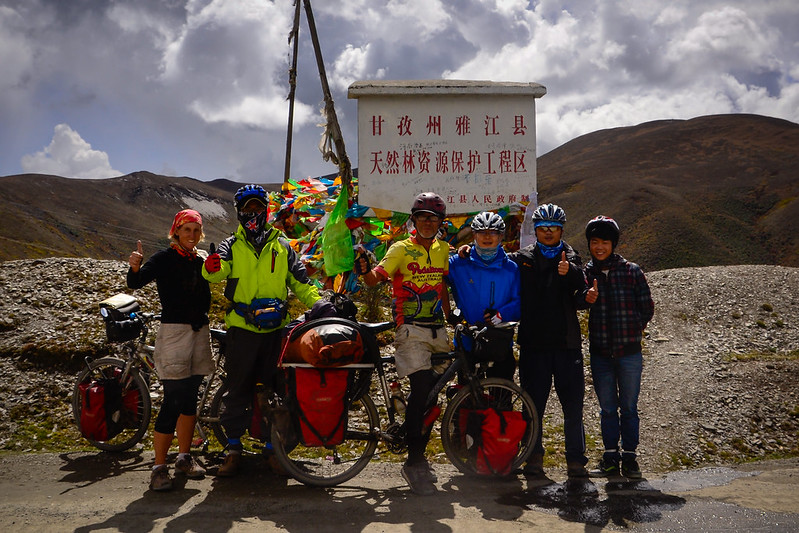
Empty spaces
Distances between settlements on the Tibetan plateau can be long. More than once we’d spotted local cycle tourists zipping past hours after we’d set up camp for the night. Now and then we’d spy a defeated soul slumped inside a mini buses with his bicycle strapped to the top.
Spoke replaced, we charged on up the first big hill and whooshed down into the valley below. So high up, the mountains were mostly barren. This was a land of yaks and semi-nomadic herders. The sun beat down with an astonishing intensity and warmed the desolate land. As soon as it slid behind a cloud, I’d start to shiver and dig into my panniers for an added layer of warmth.
Another obstacle
We cycled on determinedly wanting to make it up and over the first pass before nightfall. Our efforts were soon thwarted: another bike breakdown. This time the culprit was Eric’s machine. His gear shifter had busted.
Back to Litang? Nah. Like a magician pulling a rabbit from a hat, my husband/hoarder whipped out a brand-new gear shifter from the bottom of his pannier. (I dare not imagine what else is stuffed inside those bulging bags—maybe he’s got an extra foldable bike inside.)
With technical assistance from yet another helpful construction crew, we were back on road—now seriously behind schedule. The light would be fading before we struggled up the final turn to the top of the first pass. We’d set up camp on the windswept peak and retreat quickly into the tent as a light snow began to fall.
I’d sleep soundly that night, confident we could take any challenge Tibet hurled at us.
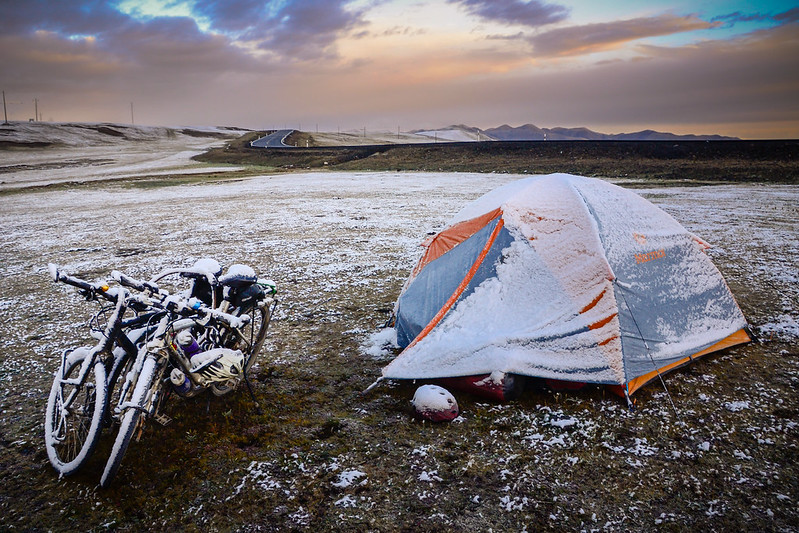
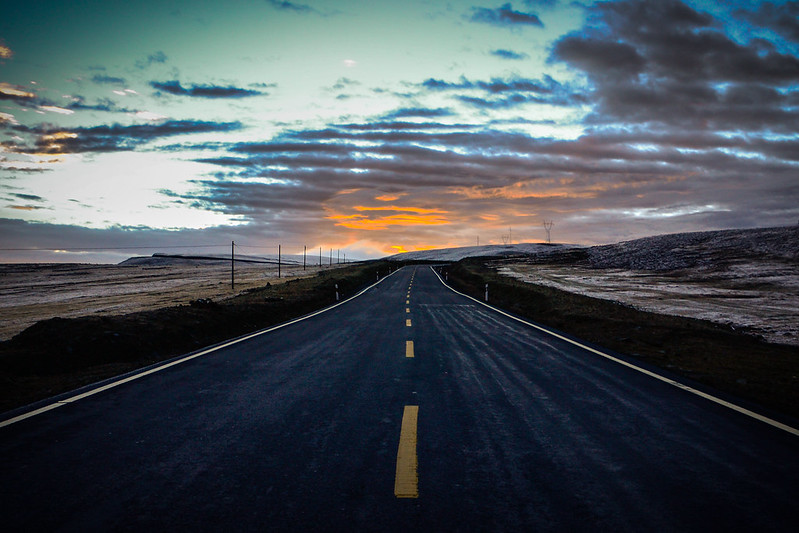
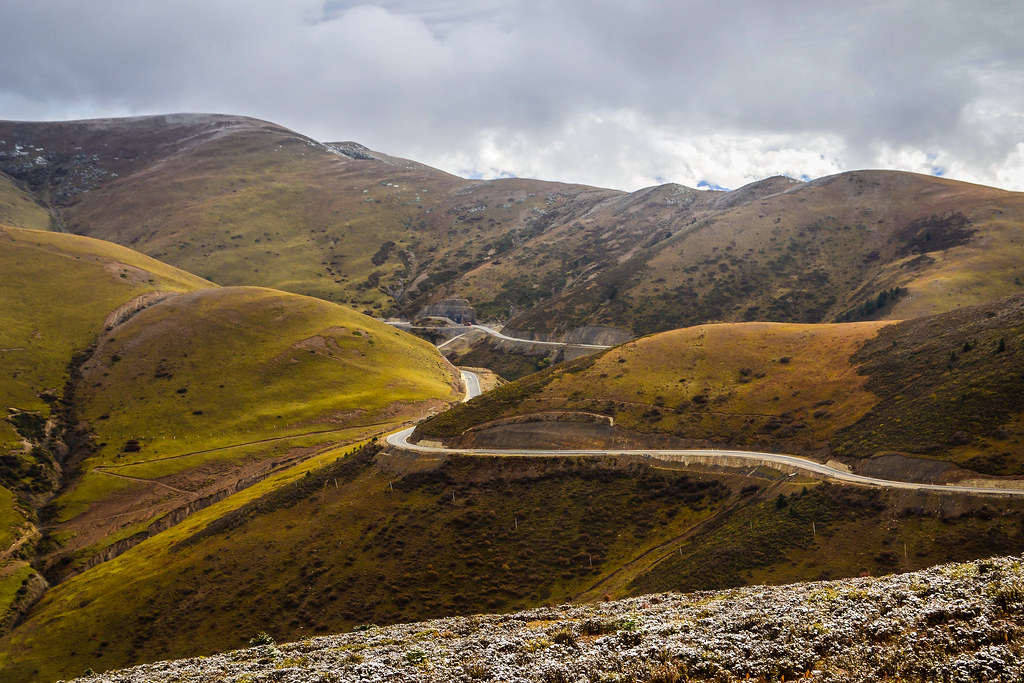
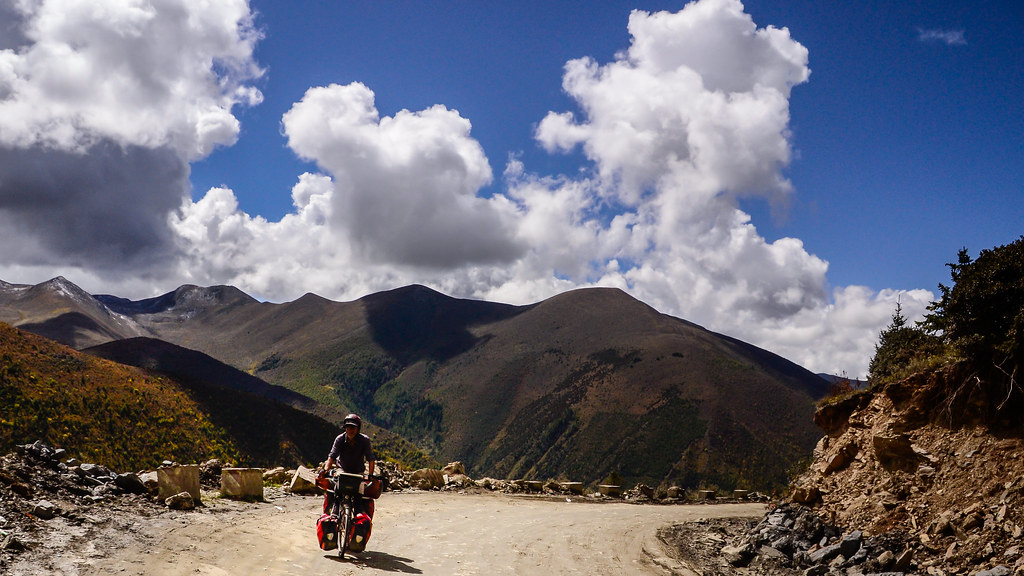
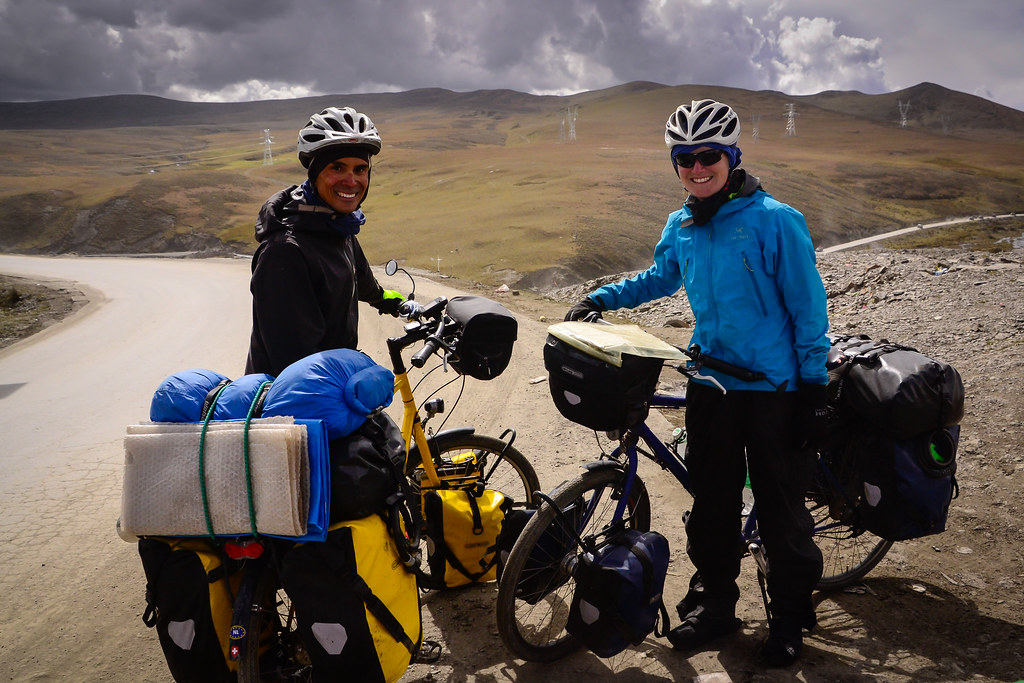
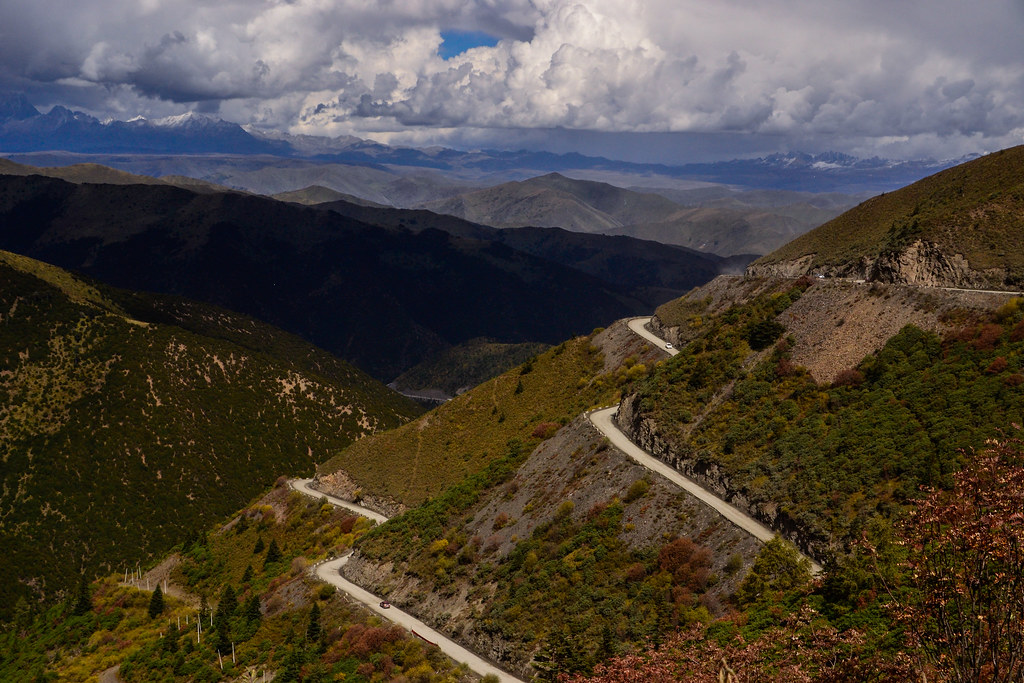
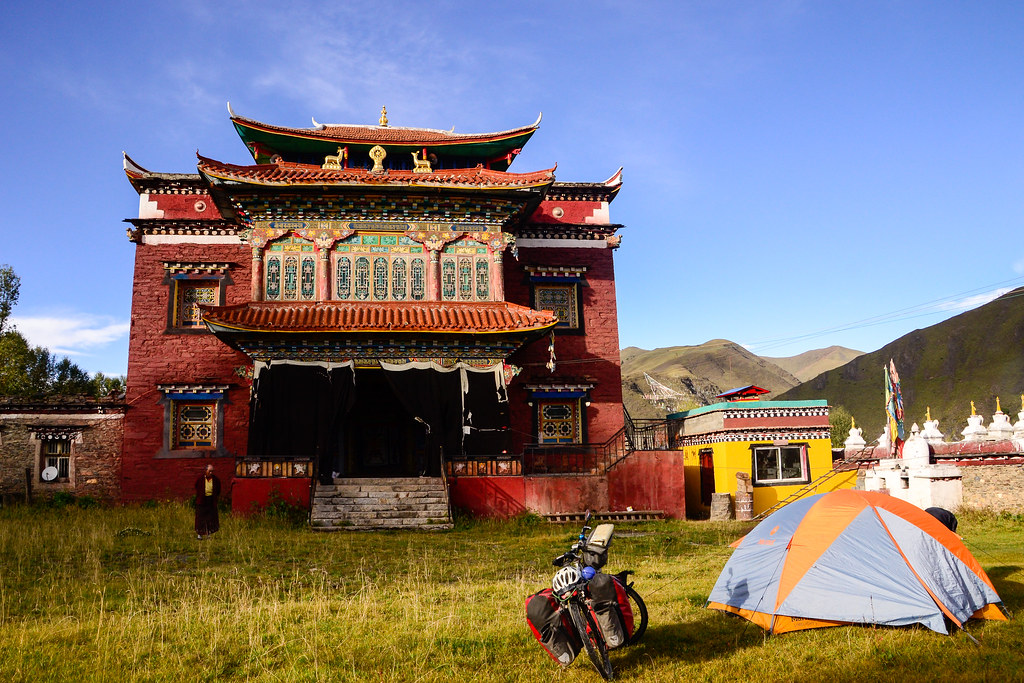
This shot is of the Buddhist temple where we were allowed to pitch our tent. Again, I was very surprised that we were granted permission by the monks. This is a 100% Tibetan area and the locals were taking full advantage of the onslaught of Han Chinese tourists. Women were hawking snacks (grilled meats and some tasty potatoes) roadside and families had turned their homes into temporary guesthouses to lodge the large numbers of holiday-makers.
